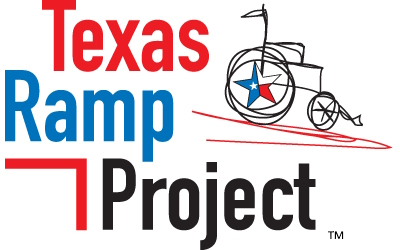Who We Are
The Texas Ramp Project is a 501(c)(3) nonprofit organization that provides free wheelchair ramps to low-income older adults and people with disabilities identified by local healthcare providers. Ramps are built with volunteer labor, keeping costs to a minimum, and are built without regard to race, religion, ethnicity, age or gender.
Our Mission Statement
To provide free wheelchair ramps to low-income older adults and people with disabilities
Our Vision Statement
“Our vision is that no Texas resident shall lack safe access because of financial limitations.”
History of the Texas Ramp Project
In 1985, members of the Kiwanis Club of Richardson, Texas, were asked to build a wheelchair ramp for a friend. That initial effort, and the next, and the next, resulted in the Dallas Ramp Project and development of a system for providing wheelchair ramps to low-income people with disabilities in Dallas County, at no cost to the recipient.
Twenty years later, the Dallas Ramp Project had built over 1,400 ramps, and it became obvious that the entire state could benefit from this volunteer ramp-building model. Thus, a new statewide nonprofit called the Texas Ramp Project (TRP) was incorporated in June 2006. Its mission: to establish regional organizations across the state to build ramps for older adults and people with disabilities in financial need. Founder and executive director was John Laine, who had served as volunteer director of the Dallas Ramp Project.
Since 2006 the Texas Ramp Project has expanded into more than 40 Texas regions, from Texarkana to El Paso and Amarillo to McAllen. In May 2024, Texas Ramp Project volunteers built their 27,000th ramp. These ramps, if laid end-to-end, would extend nearly 140 miles. To accomplish this, the Texas Ramp Project partnered with local churches, civic organizations, businesses, military servicemen and women, students, youth groups and many others, along with foundations and corporations, all across the state.
What’s most unique about the Texas Ramp Project is its use of all-volunteer labor. That means that TRP can hold the cost of a ramp to about a third that of a retail contractor. For less than $1,000 in materials and a few hours of donated labor on a Saturday morning, the life of a homebound person can be completely transformed.
Updated 06/20/2024
